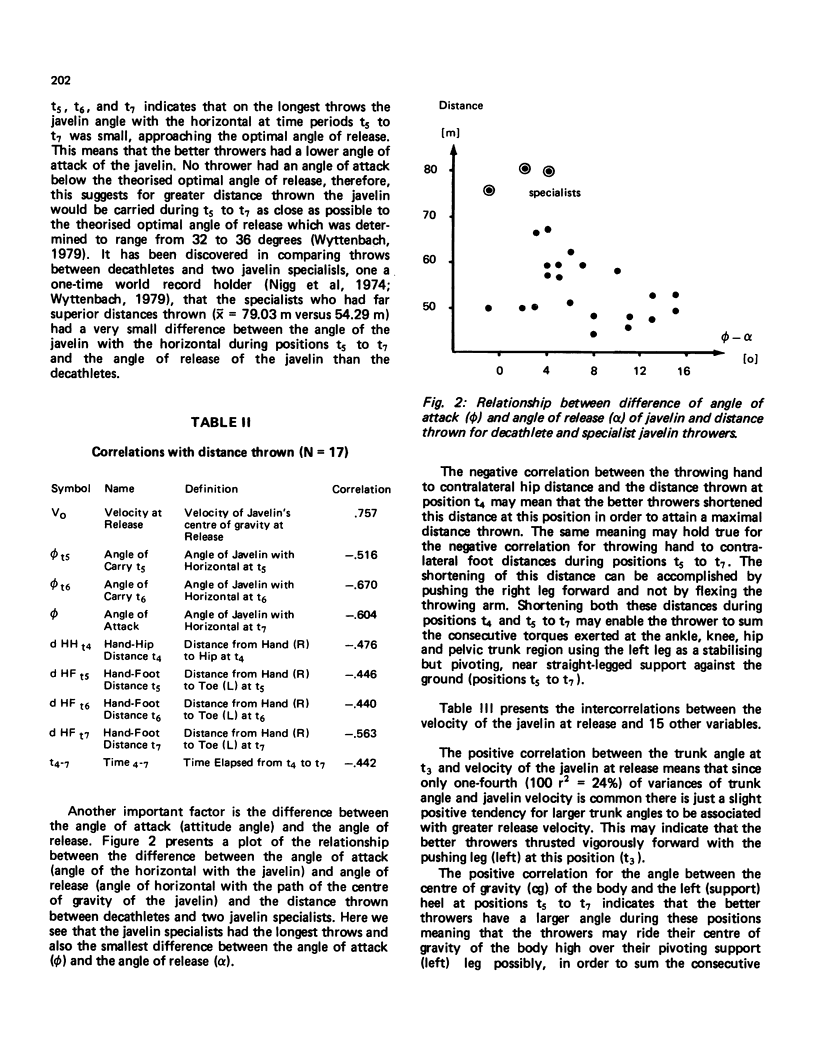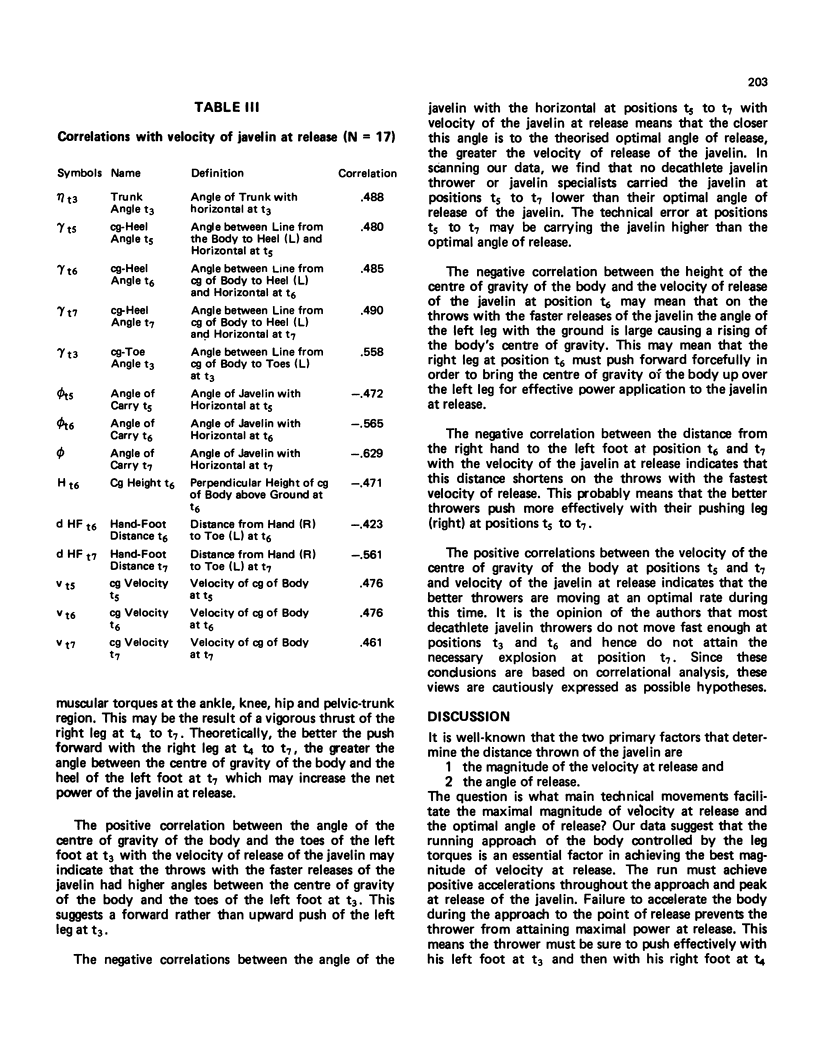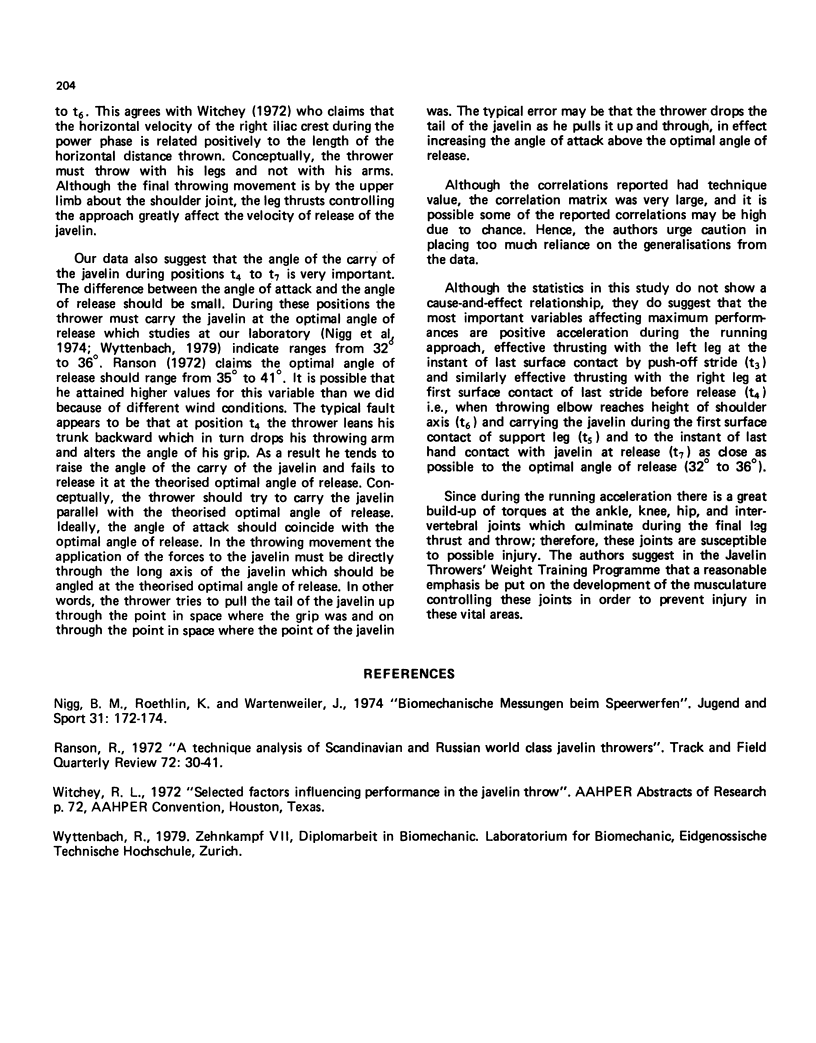Abstract
Th purpose of this study was to analyse by correlational methods the biomechanical factors involved in achieving the maximal distance thrown in the javelin event. Twelve Swiss decathletes and two world class javelin specialists were filmed by a high speed (102 fps) 16 mm camera throwing a total of 20 trials. The co-ordinates of the resulting cyclograms were processed by a computer programme and the results submitted to correlational analysis. The highest correlation was 0.76 between velocity at release and distance thrown. Other negative correlations were found between distance thrown and angle of the javelin with the horizontal (0.52) and distance thrown and throwing hand to contralateral foot distance during the last strides (0.67). Javelin specialists, who had longer throws than decathletes (mean = 79.03 m versus 54.29 m), had a smaller difference between the angle of attack and angle of release. The results suggest that in order to attain maximal distance thrown the javelin thrower should achieve positive acceleration during the running approach, effective thrusting with th right leg on the penultimate stride and carry the javelin during the last strides at the optimal angle of release (32 to 36 degrees).
Full text
PDF








